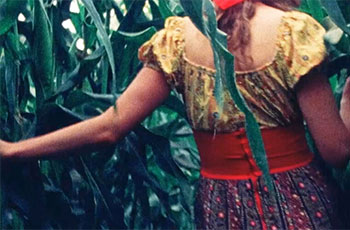Restored by The Film Foundation’s World Cinema Project and Cineteca di Bologna in collaboration with Bahram Beyzaie. Funding provided by the Hobson/Lucas Family Foundation.

Martin Scorsese created the World Cinema Project (WCP) in 2007 recognizing the urgent need to preserve, restore, and provide access to films from around the world. To date, 70 films from Africa, Asia, Eastern Europe, Central America, South America, and the Middle East have been restored, preserved, and exhibited for global audiences. As part of the WCP, the African Film Heritage Project (AFHP) was launched in 2017 in partnership with the Pan African Federation of Filmmakers (FEPACI) and UNESCO, in collaboration with Cineteca di Bologna, to preserve the legacy of African cinema. The WCP also supports Restoration Film Schools, intensive, results-oriented workshops allowing students and professionals to learn the art and science of film restoration and preservation. Titles are available for exhibition rental by clicking "Book This Film."
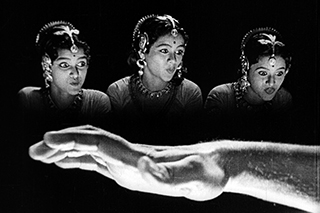
KALPANA
Director: Uday Shankar
WRITTEN BY: Uday Shankar, Amritlal Nagar
EDITING: N.K. Gopal
DIRECTOR OF PHOTOGRAPHY: K. Ramnoth
FROM: National Film Archive of India
STARRING: Uday Shankar (Udayan & Writer), Amala Uday Shankar (Uma), Lakhmt Kanta (Kamini), Dr. G.V. Subbarao (Drawing Master), Brijo Behari Banerji (Uma’s Father)
COUNTRY OF PRODUCTION: India
LANGUAGE: Hindi
COLOR INFO: Black and White
RUNNING TIME: 155 minutes
PRODUCTION COMPANY: Uday Shankar Production
SET DESIGNER: K.R. Sharma
Restored in 2008 by Cineteca di Bologna/L’Immagine Ritrovata, in association with The Film Foundation’s World Cinema Project, the family of Uday Shankar, the National Film Archive of India, and Dungarpur Films. Restoration funded by Doha Film Institute.
A great work of hallucinatory, homemade expressionism and ecstatic beauty, Uday Shankar’s Kalpana (Imagination) is one of the enduring classics of Indian cinema. Shankar, the brother of the great Ravi Shankar, was one of the central figures in the history of Indian dance, fusing Indian classical forms with western techniques. In the late 30s, he established his own dance academy in the Himalayas, whose students included his brother Ravi and future filmmaker Guru Dutt (who worked as an assistant on Kalpana). After the closure of the academy in the early 40s, Shankar started preparations on his one and only film, many years in the making.
Kalpana, with an autobiographical narrative of a dancer who dreams of establishing his own academy (starring Uday Shankar and his wife, the great Amala Shankar – the film also marks the debut of Padmini, who was 17 years old at the time), is one of the few real “dance films” – in other words, a film that doesn’t just include dance sequences, but whose primary physical vocabulary is dance. A commercial failure when it was released, the film is now regarded, justifiably, as a creative peak in the history of independent Indian filmmaking.
NOTES ON THE RESTORATION:
Kalpana has been digitally restored by the World Cinema Foundation at Cineteca di Bologna/L’Immagine Ritrovata laboratory using a combined dupe negative and a positive print held at the National Film Archive of India.
The combined dupe negative was badly damaged and marked by lines, tears, dirt, dust, white marks and poor definition. The restoration required a considerable amount of both physical and digital repair in order to recover the beauty of faces, movements and costumes, and to reduce the aforementioned issues. The original sound was digitally transferred from the combined dupe negative. Digital cleaning and background noise reduction was applied.
The restoration has generated a duplicate negative, new optical soundtrack negative for preservation as well as a complete back-up of all the files produced by the digital restoration.
Image: © Courtesy of National Film Archive of India
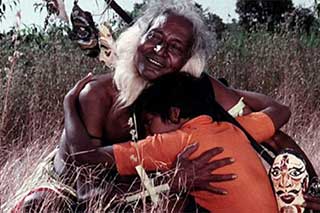
KUMMATTY
Director: Aravindan Govindan
WRITTEN BY: Aravindan Govindan
DIRECTOR OF PHOTOGRAPHY: Shaji N. Karun
STARRING: Ramunni, Master Ashokan, Vilasini Reema, Kothara Gopalkrishnan, Sivasankaran Divakaran, Vakkil, Mothassi, Shankar
COUNTRY OF PRODUCTION: India
LANGUAGE: Malayalam with English subtitles
COLOR INFO: Color
RUNNING TIME: 90 minutes
PRODUCTION COMPANY: General Pictures Corporation
Restored by The Film Foundation’s World Cinema Project and Cineteca di Bologna in association with General Pictures Corporation and the Film Heritage Foundation at L’Immagine Ritrovata laboratory.
Funding provided by the Material World Foundation.
NOTES ON THE RESTORATION:
Restored in 4K using the best surviving element: a vintage 35mm print struck from the original camera negative and preserved at the National Film Archive of India. A second 35mm print with English subtitles was used as a reference.
Color grading was supervised by the film’s cinematographer Shaji N. Karun.
Special thanks to Ramu Aravindan.
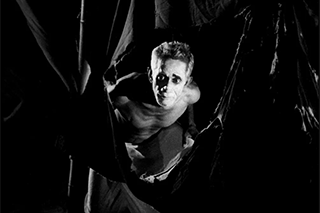
THAMP
CIRCUS TENT, THE
Director: Aravindan Govindan
WRITTEN BY: Aravindan Govindan
EDITING: A Ramesan
DIRECTOR OF PHOTOGRAPHY: Shaji N. Karun
PRODUCER: K. Ravindranathan Nair
STARRING: Nedumudi Venu, Jalaja, V. K. Sreeraman, Bharath Gopi
COUNTRY OF PRODUCTION: India
LANGUAGE: Malayalam with English subtitles
COLOR INFO: Black and White
RUNNING TIME: 129 minutes
PRODUCER: K. Ravindranathan Nair
Restored by Film Heritage Foundation, The Film Foundation’s World Cinema Project, and Cineteca di Bologna at Prasad Corporation Pvt. Ltd.’s Post - Studios, Chennai, and L’Immagine Ritrovata Laboratory, and in association with General Pictures, National Film Archive of India and the family of Aravindan Govindan. Funding provided by Prasad Corporation Pvt. Ltd. and Film Heritage Foundation.
NOTES ON THE RESTORATION:
THAMP was restored using the best surviving element: a Dupe Negative struck from a 35mm print preserved at the National Film Archive of India.
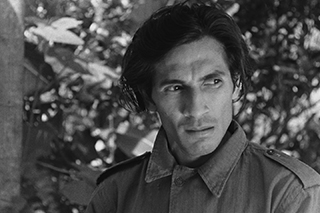
AFTER THE CURFEW
LEWAT DJAM MALAM
Director: Usmar Ismail
WRITTEN BY: Usmar Ismail, Asrul Sani
EDITING: Sumardjono
DIRECTOR OF PHOTOGRAPHY: Max Tera
MUSICAL DIRECTOR: G.R.W. Sinsu
SOUND: B. Saltzmann
FROM: Sinematek Indonesia
PRODUCTION DESIGN: Persari, Perfini
STARRING: A.N. Alcaff (Iskandar), Netty Herawaty (Norma), R.D. Ismail (Gunawan)
COUNTRY OF PRODUCTION: Indonesia
LANGUAGE: Indonesian
COLOR INFO: Black and White
RUNNING TIME: 101
SET DESIGNER: Abdul Chalid
Restored in 2012 by the National Museum of Singapore and Cineteca di Bologna/L’Immagine Ritrovata laboratory, in association with The Film Foundation’s World Cinema Project, Konfiden Foundation, Kineforum of the Jakarta Arts Council, and the family of Usmar Ismail Estate. Restoration funded by Doha Film Institute.
Lewat Djam Malam (After the Curfew) is a passionate work looking directly at a crucial moment of conflict in Indonesian history: the aftermath of the four-year Republican revolution which brought an end to Dutch rule. This is a visually and dramatically potent film about anger and disillusionment, about the dream of a new society cheapened and misshapen by government repression on the one hand and bourgeois complacency on the other.
The film’s director, Usmar Ismail, is generally considered to be the father of Indonesian cinema, and his entire body of work was directly engaged with ongoing evolution of Indonesian society. He began as a playwright and founder of Maya, a drama collective that began during the years of Japanese occupation. And it was during this period when Ismail developed an interest in filmmaking. He began making films for Andjar Asmara in the late 40s and then started Perfini (Perusahaan Film Nasional Indonesian) in 1950, which he considered his real beginning as a filmmaker. Lewat Djam Malam, a co-production between Perfini and Djamaluddin Malik’s company Persari, was perhaps Ismail’s greatest critical and commercial success.
NOTES ON THE RESTORATION:
Lewat Djam Malam has been digitally restored using the original 35mm camera & sound negatives, interpositive, and positive prints preserved at the Sinematek Indonesia. The original camera negative was scanned at 4K resolution.
The digital restoration began by focusing on fixing instability and flicker followed by the meticulous work of dirt removal, carried out both by automatic tools and by a long manual process of digitally cleaning each image (frame by frame). The film also suffered from signs of mould and vinegar syndrome –the laboratory took great pains to address these problems without damaging the definition of the photographic output, specifically with regards to details and faces.
The original sound was digitally restored using the 35 mm original soundtrack negative. Two reels were missing from the soundtrack negative, and were therefore taken from the combined interpositive. The last 2 minutes of reel 5 were missing from all available elements, but were recovered from a positive copy. The soundtrack has been scanned using laser technology at 2K definition. The core of the digital sound restoration consists on several phases of manual editing, high resolution de-clicker & de-crackle, and multiple layers of fully automated noise reduction.
The restoration was completed at L’immagine Ritrovata laboratory on March 2012.
Image: © Courtesy of the Usmar Estate

CHESS OF THE WIND
SHATRANJ-E BAAD
Director: Mohammad Reza Aslani
WRITTEN BY: Mohammad Reza Aslani
EDITING: Abbas Ganjavi
DIRECTOR OF PHOTOGRAPHY: Houshang Baharlou
PRODUCER: Bahman Farmanara
MUSICAL DIRECTOR: Sheyda Gharachedaghi
ART DIRECTOR: Houri Etesam
STARRING: Fakhri Khorvash, Shohreh Aghdashloo, Shahram Golchin, Mohamad Ali Keshavarz, Hamid Taati, Akbar Zanjanpour
COUNTRY OF PRODUCTION: Iran
LANGUAGE: Farsi
COLOR INFO: Color
RUNNING TIME: 93 minutes
PRODUCER: Bahman Farmanara
Restored by The Film Foundation’s World Cinema Project and Cineteca di Bologna at L’Image Retrouvée laboratory (Paris) in collaboration with Mohammad Reza Aslani and Gita Aslani Shahrestani. Restoration funding provided by the Hobson/Lucas Family Foundation.
Shatranj-e Baad might be one of the most emblematic films in the history of Iranian cinema, even though its visibility was limited to a disastrous preview at Tehran International Film Festival in 1976. Due to an artistic conflict between Aslani and the festival curator, the projection was sabotaged, its reels were disrupted and projector malfunctioned. The critics walked out during the screening, as did the jury who pulled the film out of the competition. Instantly deemed elitist, the film was refused by all the distributors. Discouraged, the producer didn’t bother sending the film to the international festivals. In subsequent private showings, Henri Langlois, Roberto Rossellini and Satyajit Ray had the opportunity to see the film in proper condition and congratulated the young director. After that, Shatranj- e Baad, was never screened again. Following the establishment of the Islamic government in 1979, the film was banned because of its non-Islamic content and the reels were subsequently declared lost. There was only a censored VHS, of very poor quality, circulating through informal channels. Although the film rested in obscurity for a long time, its aesthetic value was rediscovered in 2000 by a new generation of critics and cinéphiles who classed it as one of Iran’s lost cinematic masterpieces. Shatranj-e Baad is a singular film, at the confluence of the aesthetics of Visconti and Bresson. The influence of painting can be found in each shot and the careful screenplay toys with multiple plot twists. It was only in 2015 that Aslani found the negatives of Shatranj-e Baad, quite by chance at a flea-market for vintage film costumes and accessories. He bought the reels and immediately sent them to France where they could safely be restored. Now we can fully rediscover all the originality and modernity of this fascinating film, which has spent almost 45 years in the shadows.
- Gita Aslani Shahrestani
NOTES ON THE RESTORATION:
The 4K restoration of CHESS OF THE WIND was completed using the original 35mm camera and sound negatives. Color grading required meticulous work, notably reels 9 and 10 which called for an orange-tinting effect reminiscent of early silent cinema. The restoration was closely supervised by Gita Aslani Shahrestani and Mohammad Reza Aslani; the film's cinematographer Houshang Baharlou also contributed to the grading process.
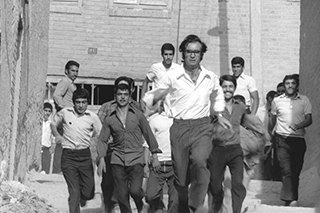
Downpour
RAGBAR
Director: Bahram Beyzaie
WRITTEN BY: Bahram Beyzaie
EDITING: Mehdi Rajaeeyan
DIRECTOR OF PHOTOGRAPHY: Barbod Taheri
PRODUCER: Barbod Taheri
MUSICAL DIRECTOR: Shida Garachedaghi
STARRING: Parviz Fannizadeh, Parvaneh Masumi, Manuchehr Farid, Mohammad Ali Keshavarz, Hossein Kasbian, Jamsheed Layegh, Chehrazad
COUNTRY OF PRODUCTION: Iran
LANGUAGE: Persian
COLOR INFO: Black and White
RUNNING TIME: 129 minutes
PRODUCTION COMPANY: Mehregan Film
PRODUCER: Barbod Taheri
Restored in 2011 by Cineteca di Bologna/L’Immagine Ritrovata laboratory, in association with The Film Foundation’s World Cinema Project and Bahram Beyzaie. Restoration funded by Doha Film Institute.
During Downpour, the equations of commercial and intellectual films were the same. The common morality of the action/drama films of the commercial cinema had a tone of political ideology and social activism. The intellectual films were praised for communicating with the mass culture. In that sense, I don’t want to be popular. Many of these (popular) moralities, in my opinion, are wrong and we are all victims of them. So, I have betrayed my people if I endorse them. I have deviated from the morals of the political parties, hence they have labeled me (inaccessible), not the people. At the heart of my harsh expression, there is a love and respect, for the people, that does not exist in superficial appraisals of the masses. … my audiences are those who strive to go one step further, not those who are the guardians of the old equations nor those who dread self examination and self reflexivity.
–Bahram Beyzaie
I’m very proud that the World Cinema Foundation has restored this wise and beautiful film, the first feature from its director Bahram Beyzaie. The tone puts me in mind of what I love best in the Italian neorealist pictures, and the story has the beauty of an ancient fable – you can feel Beyzaie’s background in Persian literature, theater and poetry. Beyzaie never received the support he deserved from the government of his home country – he now lives in California – and it’s painful to think that this extraordinary film, once so popular in Iran, was on the verge of disappearing forever. The original negative has been either impounded or destroyed by the Iranian government, and all that remained was one 35mm print with English subtitles burned in. Now, audiences all over the world will be able to see this remarkable picture.
–Martin Scorsese
NOTES ON THE RESTORATION:
The source element was a positive print with English subtitles provided by director Bahram Beyzaie. Since this is the only known surviving copy of the film – all other film sources were seized and are presumed destroyed – the restoration required a considerable amount of both physical and digital repair.
The surviving print was badly damaged with scratches, perforation tears and mid-frame splices. Over 1500 hours of work were necessary to complete the restoration.
Image: © Courtesy of Bahram Beyzaie
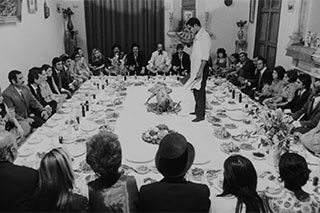
POSTMAN, THE
POSTCHI
Director: Dariush Mehrjui
WRITTEN BY: Dariush Mehrjui
EDITING: Talat Mirfendereski
DIRECTOR OF PHOTOGRAPHY: Houshang Baharlou
STARRING: Ali Nasirian, Ezzatollah Entezami, Zhaleh Sam, Ahmadreza Ahmadi, Ezzatollah Ramezanifar, Bahman Forsi
COUNTRY OF PRODUCTION: Iran
LANGUAGE: Farsi with English subtitles
COLOR INFO: Black and White
RUNNING TIME: 109 minutes
Restored by The Film Foundation’s World Cinema Project and Cineteca di Bologna at L’Immagine Ritrovata laboratory, in association with the family of Dariush Mehrjui. Funding provided by the Hobson/Lucas Family Foundation.
NOTES ON THE RESTORATION:
The 4K restoration used two 35mm prints preserved at Arsenal - Institut für Film und Videokunst. Special thanks to Ehsan Khoshbakht.
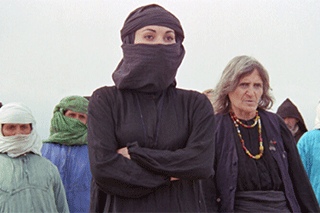
STRANGER AND THE FOG, THE
GHARIBEH VA MEH
Director: Bahram Beyzaie
WRITTEN BY: Bahram Beyzaie
EDITING: Bahram Beyzaie
DIRECTOR OF PHOTOGRAPHY: Mehrdad Fakhimi, Firooz Malekzadeh
STARRING: Parvaneh Massoumi, Khosrow Shojazadeh, Manuchehr Farid, Esmat Safavi, Sami Tahassoni, Valiyollah Shirandami, Reza Yaghuti, Esmaeel Poor Rez, Mohammad Pour Reza
COUNTRY OF PRODUCTION: Iran
LANGUAGE: Farsi version with English subtitles
COLOR INFO: Color
RUNNING TIME: 140 minutes
NOTES ON THE RESTORATION:
THE STRANGER AND THE FOG was restored in 4K using the original camera and sound negatives and was carried out at L'Immagine Ritrovata in 2023. Color grading was supervised by Bahram Beyzaie. With special thanks to Ehsan Khoshbakht and Mozhdeh Shamsai.
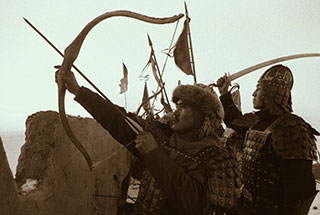
FALL OF OTRAR, THE
GIBEL OTRARA
Director: Ardak Amirkulov
WRITTEN BY: Aleksey German, Svetlana Karmalita
EDITING: Aiman Kistauowa
DIRECTOR OF PHOTOGRAPHY: Sapar Koichumanov
STARRING: Dokhdurbek Kydyraliyev, Tungyshpai Zhamankulov, Bolot Beyshenaliev, Abdurashid Makhsudov, Zaur Zekhov, Kasym Zhakibayev
COUNTRY OF PRODUCTION: Kazakhstan
LANGUAGE: Kazakh, Mandarin, and Mongolian
COLOR INFO: Color
RUNNING TIME: 156 minutes
Restored by The Film Foundation’s World Cinema Project and Cineteca di Bologna at L’Immagine Ritrovata laboratory, in collaboration with Ardak Amirkulov. Funding provided by the Hobson/Lucas Family Foundation.
NOTES ON THE RESTORATION:
Restored in 4K from the original camera and sound negatives. Scanning was performed by ARDFILM in Almaty (Republic of Kazakhstan). Ardak Amirkulov supervised the scanning and approved the final grading. Special thanks to Daniel Bird. Restoration work was completed in 2024 by L’Immagine Ritrovata.
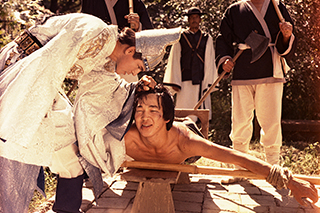
REVENGE
MEST
Director: Ermek Shinarbaev
WRITTEN BY: Anatoli Kim
EDITING: Polina Stein
DIRECTOR OF PHOTOGRAPHY: Sergei Kosmanev
PRODUCER: Habibur Rahman Khan
MUSICAL DIRECTOR: Vladislav Shute
STARRING: Alexandre Pan (Sungu, the poet), Oleg Li (King-Monk), Valentin Te (Novice), Lubove Germanova (Elza), Rasim Jakibaev (Tsai)
COUNTRY OF PRODUCTION: Kazakhstan
LANGUAGE: Russian with French and English subtitles
COLOR INFO: Color
RUNNING TIME: 96 minutes
PRODUCTION COMPANY: Kazakhfilm Studios
SET DESIGNER: Elena Eliseeva
PRODUCER: Habibur Rahman Khan
Restored in 2010 by Cineteca di Bologna/L'Immagine Ritrovata laboratory, in association with The Film Foundation’s World Cinema Project, the Kazakhfilm Studio, the State Archive of the Republic of Kazakhstan and Ermek Shinarbaev. Restoration funded by Armani, Cartier, Qatar Airways and Qatar Museum Authority.
In a rage, a teacher murders a boy. Another boy is bred, for one sole purpose: to avenge his brother’s death. Kazakh master Ermek Shinarbaev’s close collaboration with the Korean-Russian writer Anatoli Kim yielded three great films, the most remarkable of which is this beautiful, profoundly unsettling film. A true odyssey, geographically and psychologically. One of the greatest films to emerge from the Kazakh New Wave, and one of the toughest.
(Kent Jones, May 2010)
In the beginning of the 40s, hundreds of thousands of Koreans that had lived in the Russian Far East since the XIX century were forcibly displaced overnight according to Stalin’s orders. They were regarded as traitors and public enemies. Women, children, old people, were sent away with no explanation. The Korean diaspora, with a population of over a million, has been a forbidden topic for many years. Revenge is the first film telling the story of their tragedy.
(Ermek Shinarbaev, May 2010)
NOTES ON THE RESTORATION:
The restoration of Revenge, used the original camera negative, the sound negative and a positive print provided by the Kazakhfilm Studio and held at the State Archive of the Republic of Kazakhstan. Special thanks to director Ermek Shinarbaev for actively participating in the restoration.
Image: © Courtesy of Kazakhfilm Studio
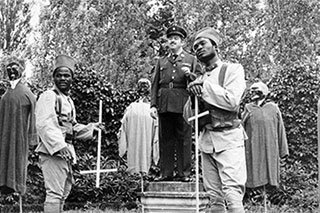
SOLEIL Ô
OH, SUN!
Director: Med Hondo
WRITTEN BY: Med Hondo
EDITING: Michèle Masnier, Clément Menuet
DIRECTOR OF PHOTOGRAPHY: François Catonné, Jean-Claude Rahaga
STARRING: Robert Liensol, Théo Légitimus, Gabriel Glissand, Mabousso Lô, Alfred Anou, Les Black Echos, Ambroise M’Bia, Akonio Dolo
COUNTRY OF PRODUCTION: Mauritania
LANGUAGE: French with English subtitles
COLOR INFO: Black and White
RUNNING TIME: 98 minutes
PRODUCTION COMPANY: Grey Films, Shango Films
SET DESIGNER: Med Hondo
Restored by Cineteca di Bologna at L’Immagine Ritrovata laboratory in collaboration with Med Hondo. Restoration funded by the Hobson/Lucas Family Foundation and The Film Foundation’s World Cinema Project.
This restoration is part of the African Film Heritage Project, an initiative created by The Film Foundation’s World Cinema Project, the Pan African Federation of Filmmakers and UNESCO – in collaboration with Cineteca di Bologna – to help locate, restore, and disseminate African cinema.
I identify with Med Hondo in terms of anger and I share his obsession with history and self-reliance.
--Haile Gerima
When I wrote my script I did not have an audience in mind, I was living in France and experiencing what being a minority felt like. I had to yell and free myself. Writing the script of Soleil Ô was an authentic act of rage and liberation.
Once the script was ready, I gathered a crew of technicians and a team of African actors. Then I went to see some film processing companies and told them “Here I am, I don’t have a penny in my pocket but I want to make a film, let me have some raw film, I will reimburse you on an installment plan, and if I fail to do so you can put me in jail.” They agreed. The film cost $ 30,000 and it took almost two years to shoot because my actors were not always available.
There are different perceptions of an image. Soleil Ô is crystal clear and is neither intellectual nor sophisticated. It has often happened that those who understood it best were illiterate. When it was shown in Algeria, because the audience was completely able to identify with the film, the proletarians explained it to the intellectuals.
My main character could be a garbage collector, a student, or a teacher. His status does not prevent him from being affected in the same manner by the general conditions of history within a racist society. To be a Black expatriate is an identity. Soleil Ô derives from the African oral tradition. It depicts a unique reality. There is no dichotomy between style and content; here it is the content which imposes a style. I wanted to describe several people through one person instead of using a group of people. In my country, when people talk about a specific issue, they may digress and come back to their initial topic. Black cultures have a syntax which has nothing to do with Cartesian logic or that of other civilizations.
-- Med Hondo
NOTES ON THE RESTORATION:
The restoration of Soleil Ô was made possible through the use of a 16mm reversal print, and 16mm and 35mm dupe negatives deposited by Med Hondo at Ciné-Archives, the audiovisual archive of the French Communist Party, in Paris.
The reversal print was scanned at 4K and digital restoration eliminated dirt, scratches and mold. Despite excellent photographic quality overall, a few sequences appear slightly out-of-focus; this is true to the original cinematography.
A vintage 35mm print preserved at the Harvard Film Archive was used as a reference. Color grading was supervised by cinematographer François Catonné.
The original 16mm magnetic tracks were used for the audio restoration. After digitization, the soundtrack was cleaned and background noise reduction eliminated all noticeable wear marks; particular attention was devoted to the specific dynamics and features of the original soundtrack, namely percussion and chants. Reel 4 as well as the main and end titles were missing, so these were restored using the original 35mm soundtrack. The latter was also used to replace the 16mm mag tracks in the parts where the mix differed slightly from the vintage 35mm print.
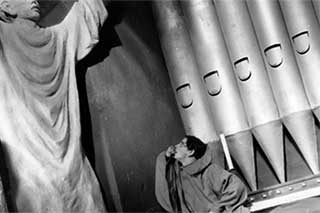
DOS MONJES
TWO MONKS
Director: Juan Bustillo Oro
WRITTEN BY: Juan Bustillo Oro, José Manuel Cordero
EDITING: Juan Bustillo Oro
DIRECTOR OF PHOTOGRAPHY: Agustín Jiménez
PRODUCER: José San Vicente, Manuel San Vicente
MUSICAL DIRECTOR: Max Urban
PRODUCTION DESIGN: Mariano Rodríguez, Granada, Carlos Toussaint
STARRING: Víctor Urruchúa, Carlos Villatoro, Beltrán de Heredia, Emma Roldán, Magda Haller
COUNTRY OF PRODUCTION: Mexico
LANGUAGE: Spanish with English subtitles
COLOR INFO: Black and White
RUNNING TIME: 85 minutes
PRODUCTION COMPANY: Proa Films
PRODUCER: José San Vicente, Manuel San Vicente
Restored by The Film Foundation’s World Cinema Project at L’immagine Ritrovata laboratory in collaboration with Filmoteca de la UNAM and Cinémathèque française. Restoration funded by the Material World Charitable Foundation.
